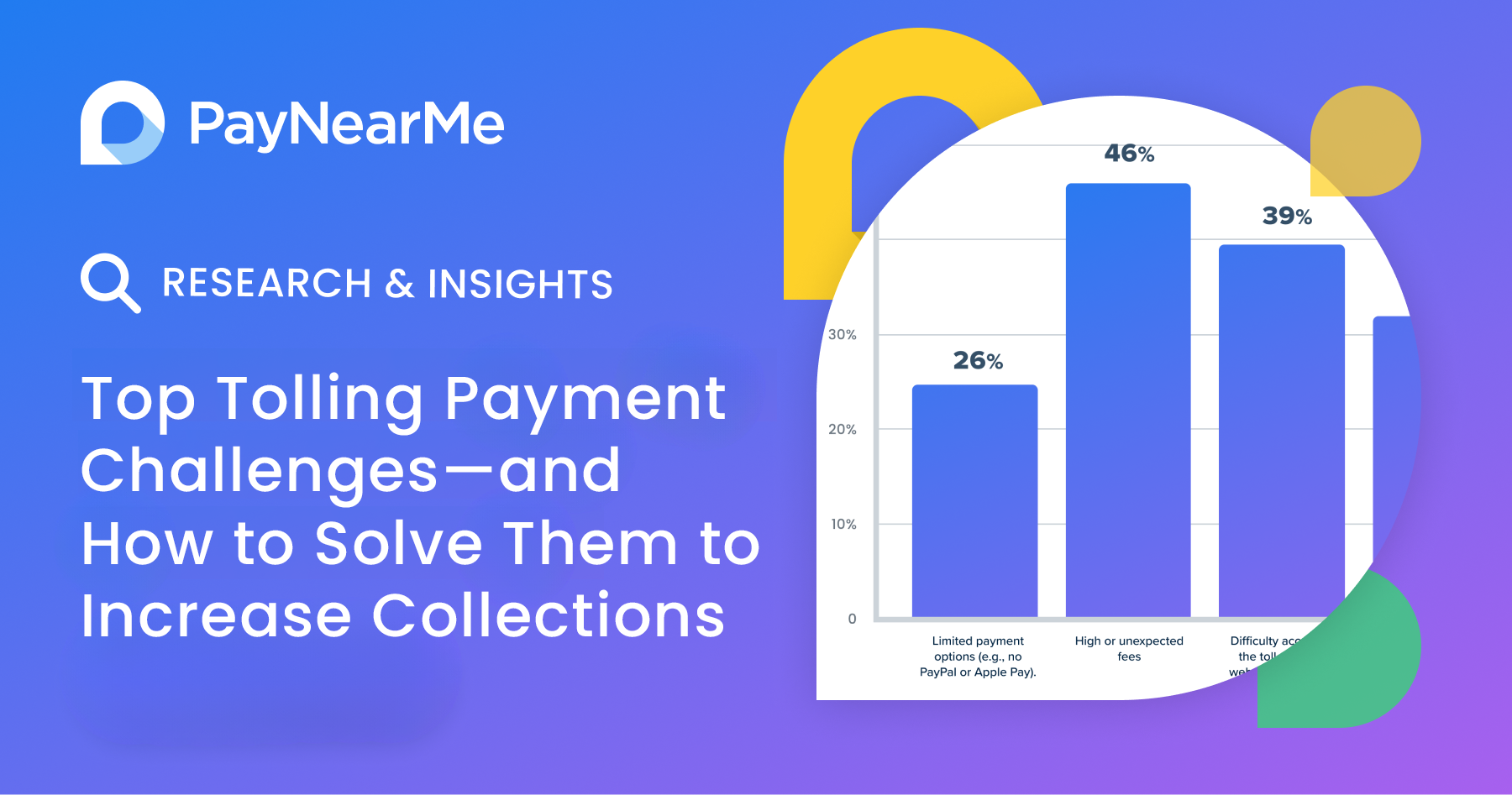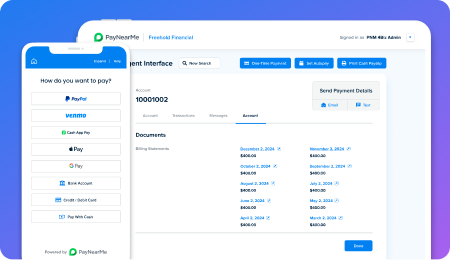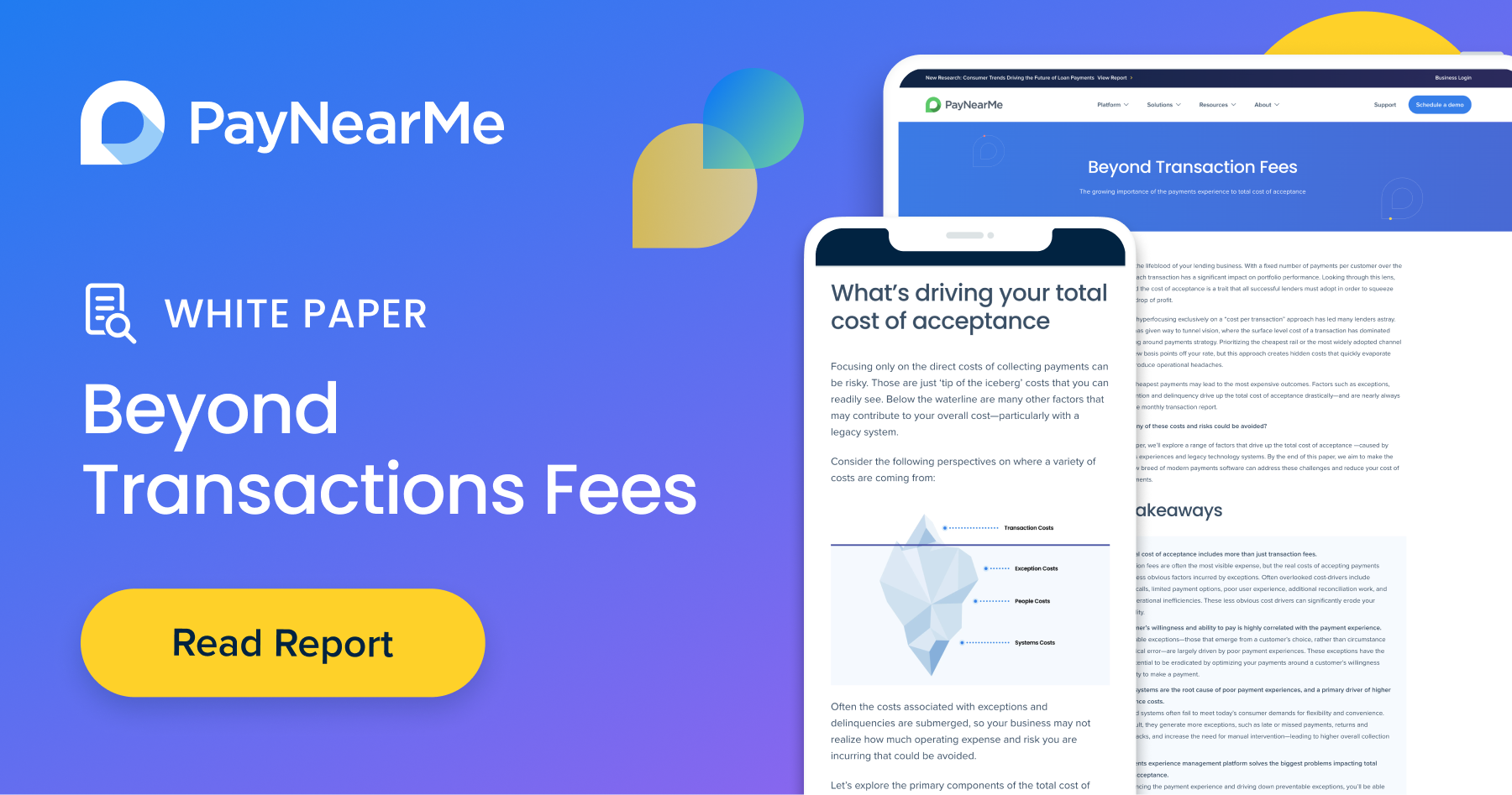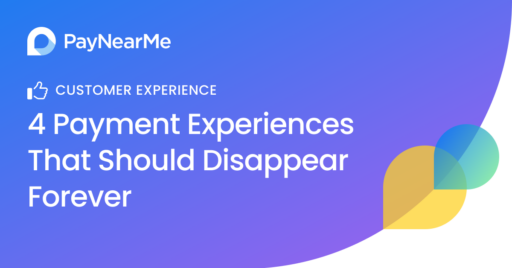Top Tolling Payment Challenges—and How to Solve Them to Increase Collections

All-Electronic Tolling (AET) is transforming roads—but the payment experience hasn’t kept up. As a result, tolling agencies are losing an estimated $2.24 billion annually to unpaid tolls. To recapture lost revenue, agencies must modernize how drivers engage with toll payments.
So how can they make it easier and more likely for drivers to pay tolls on time?
As a launch point, it’s critical for toll operators and agencies to understand driver payment behaviors and what’s needed to reduce violations that drain away profits. That’s the focus of a recent PayNearMe consumer research report, The Impact of Payment Experience on Toll Revenue Leakage.
In digging into consumer perceptions and preferences, we identified specific pain points about paying toll invoices. We also explored how certain payment innovations could accelerate collections.
The scope of the payment problem
AET is removing disruption to keep traffic moving, but it’s also making toll payment less visible and easier to forget. Whether scanned by transponder or plate, most drivers don’t give payment a second thought.
Toll automation could be highly profitable if the majority of drivers have a transponder with a fully funded toll account. Yet, our research found that 46% of consumers do not have a toll account and 55% of them infrequently use toll roads, so it’s unlikely they’ll have a registered account.
That means more pay-by-plate invoices, and that’s where losses stack up. Nearly 1 in 4 drivers (23%) delay, forget or avoid a toll invoice payment. And once it’s past due, a staggering 73% of people delayed payment further. It’s no surprise that nearly 40% of expected revenue goes uncollected.
Legacy payment systems are failing
Despite modernizing how drivers move through toll roads, many state and regional agencies still rely on outdated methods to collect payments. But that no longer aligns with what today’s consumers expect. They’re used to the ease and convenience offered by tech and retail giants such as Amazon and Uber—and they want the same simplicity when it comes to paying bills, including toll invoices.
When paying a bill seems frustrating and rigid, consumers are more likely to deprioritize that payment or skip it altogether. For toll authorities, that drives up collection costs.
What are some key pain points that should be targeted for improvements?
- Friction in the overall payment experience: For many drivers, paying toll invoices is a hassle. Nearly 50% of those surveyed agreed that a shorter, easier process would have helped them pay on time and avoid a past-due violation.
- Complicated toll websites: Toll agencies often have outdated websites or payment portals that are not mobile-friendly and may be confusing to navigate. In fact, 2 in 5 (39%) drivers reported having difficulty with accessing toll sites. User frustration is now a major contributor to site abandonment, which increases the likelihood of late payment and higher costs to collect.
- Lack of digital wallet payments: Legacy systems for toll collection have limited payment options, yet many consumers now rely on using digital wallets. In fact, 40% of consumers have used wallets such as Apple Pay, PayPal and Venmo to pay bills, according to a recent PYMTS study. Our research echoed that sentiment, with 39% of drivers stating they could avoid past-due violations if toll agencies offered digital wallet options. Payments from toll accounts also drop off. One-third of drivers find it difficult to fund toll accounts because they can’t use digital wallets or non-bank payment apps. It underscores that the problem goes beyond just pay-by-plate invoice collections.
Modernizing the payment experience
Getting drivers to pay in the moment (via transponders) and pay toll invoices on time relies on making the payment experience as easy as possible. Increasing the likelihood and ability for more drivers to pay tolls helps reduce the overall cost of toll collections.
What are some pivotal payment innovations to focus on?
- Digital wallet payments: Many consumers store credit cards and cash balances in wallet apps in addition to or instead of using bank accounts. Toll agencies that accept a full range of the most popular digital wallets (e.g., PayPal, Venmo, Apple Pay, Cash App Pay, Google Pay) can significantly increase timely payments.
- Cash payment at retail locations: Drivers who infrequently use toll roads—particularly low-income individuals—were used to paying tolls in cash. Automated systems have removed that option, creating a barrier to payment. Yet 42% of people surveyed believe toll agencies have a responsibility to provide accessible payment options for unbanked and underbanked populations. Enabling cash payment at retail locations where people frequently shop (e.g., 7-Eleven, Walmart, Walgreens) is a powerful way to fully support underbanked communities, while improving collections.
- Scan-and-go QR codes on paper invoices: Pay-by-plate paper invoices may be the most at risk of getting lost or ignored, so simplifying payment access is crucial. With a modern payments platform, toll authorities can issue every invoice with a personalized, scan-and-go QR code. Payers simply need to scan it with their smartphone to instantly access a payment screen, pre-populated with their toll invoice details, without having to log in. It’s simple, secure and removes common pain points. It’s no surprise that 45% of those surveyed agree this option is appealing.
Improve profitability with optimized payment experiences
As more states and regions implement automated tolling to improve roadways, operators face a rising imperative to reduce the overall cost of collections. With PayNearMe, toll agencies can quickly implement an innovative hosted payments platform that makes it easy and flexible for drivers to pay, improving on-time collections and reducing costs and risk.
Click here to read the full research report, The Impact of Payment Experience on Toll Revenue Leakage.




